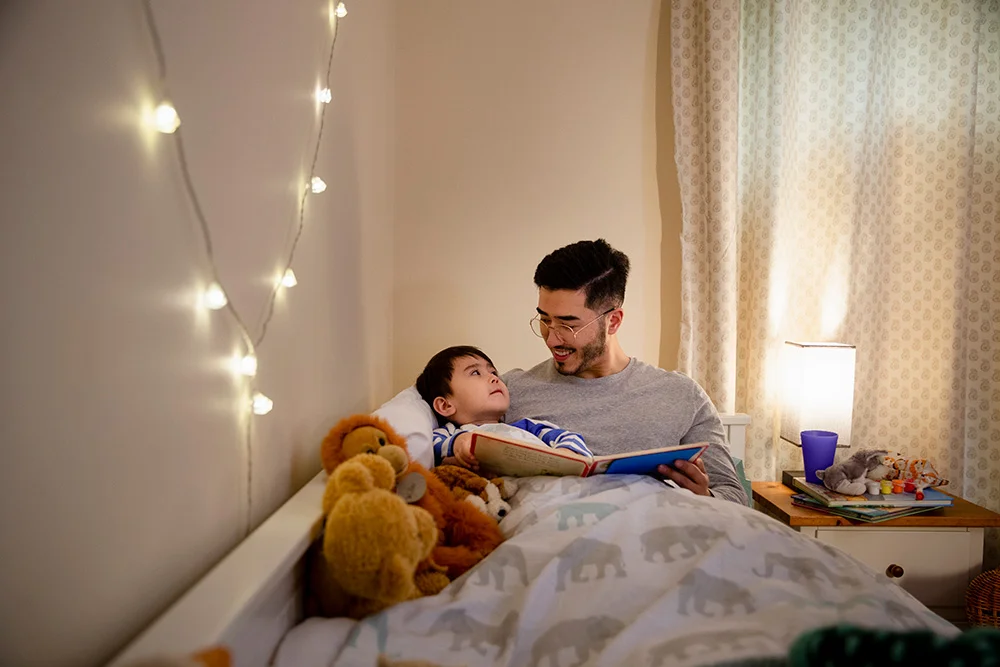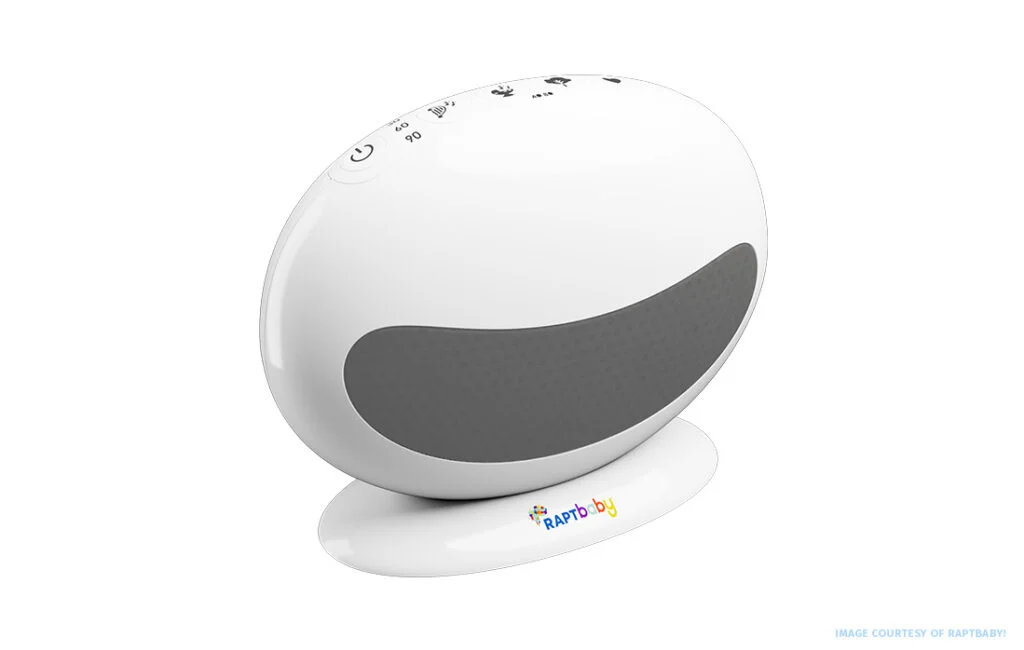
In pregnancy or early days after a baby’s birth, parents often find themselves shopping for a sound machine for their nursery. What’s going to drown out all that background noise? What sounds most like the womb? What will give us just a tiny bit more shut-eye as brand new parents? All valid questions, and key considerations when they shop for this product.
But neuroscientist and co-founder of RAPT Ventures Inc., Dr. April Benasich, who offers a “smart” sound machine for babies and kids, says it might be time to ask different questions entirely in order to find the most optimal product for your baby’s development. The Smarter Sleep sound machine is designed not to just drown out noisy dogs and siblings in the background during nap time, but to encourage cognitive development in the sleeping baby’s brain.
Building the Smarter Sound Machine
Benasich, who is the Elizabeth H. Solomon Endowed Chair in Developmental Cognitive Neuroscience at Rutgers University, and the director of the Infancy Studies Laboratory at the Center for Molecular & Behavioral Neuroscience, explains the need for a smarter sound machine.
“Lots of parents don’t know that when their babies are sleeping, their brains are very busy…they are setting up these networks and listening for specific sounds that the brain analyzes statistically,” she says. “It analyzes the speech stream and segments it [to learn] this word begins and ends here, this sound belongs to this other sound.” The Smarter Sleep Machine is different from your average white noise machine because it uses subtle but structured acoustic cues built into the soundtrack that stimulates an infant’s efforts to identify sound to build those language networks.
“Our goal was to take the sound machine, which is typically just used to promote sleep, and add an enriched supportive auditory environment that is more beneficial for a baby’s development,” Benasich adds.
How it Works
If you listen to RAPT’s Smarter Sleep sound machine, you will hear noises that seem typical of any sound machine, like a nature scene with leaves and a pleasant breeze. But what you’ll also notice if you listen closely, are those cues that differentiate it from other sound machines, such as a twig cracking in the nature scene. Or, you might find yourself in a more realistic womb setting than the “perfect” womb, in which you can hear additional rustling or jostling that isn’t as repetitive as other products might have.
“Womb sounds have lots of variation and an underlayer and overlayer of sounds — babies begin to learn about speech sounds in their last trimester, when they are hearing muffled but distinct lower frequency sounds that help the brain set up those linguistic networks,” Dr. Benasich adds. In tens of milliseconds, short patterns of sound “tickle the brain” and are complex, changing over time, she says.
Is there a healthier alternative to white noises, and other traditional sound machines?
Dr. Benasich will also be the first to say that you don’t have to have this exact sound machine. Instead, she cautions against sound machines blocking out typical acoustic cues naturally in a baby’s environment, that are being drowned out by white, green, brown, and other colored noise, among other typical soundtracks.
“They do this normally and naturally, but if you’re using sounds to block out background noise or using a sound soother to help your baby go to sleep, that’s fine, but sounds that block these specific acoustic cues can be problematic, particularly for kids who are at risk because of some other risk factor,” she says, pointing to the need for additional research on the topic. She gives the example of using white noise for a few minutes to put your baby to sleep being not a problem, but that parents using it all night poses an issue. No research has proven white noise is “bad” for human infants, she says, though it’s been shown to interfere for animal infants researchers have studied.

“Why would you take the chance in delaying that? It’s such a critical period when language is being set up… the brain is very busy,” she adds. Additional research has shown that babies in the NICU in particular might have overexposure to high-frequency noise, disrupting the necessary development of auditory cortical circuits. In addition, it concludes that it can be harmful to mask human speech sounds.
So, Dr. Benasich’s product is supported by corresponding research that she conducted, published in March 2024, that shows infants had more efficient syllabic processing efficiency at the 9- and 12-month marks, and also had improved language scores at 12 and 18 months.
Gaining respect in the medical sleep community
Other child sleep experts, such as Dr. Meredith Broderick, a neurologist in Seattle, concur with the idea that smart sound machines might be more optimal than traditional sound machines for babies.
“Smart sound machines can help improve sleep by two major mechanisms. First, they can mask other noises in the environment, like if you have an older child that makes noise or if you live in a city with street noise for instance,” Dr. Broderick says. “Second, they can create a behavioral cue, where your baby develops a sleep association with the soundscape. Smart sound machines will likely have other benefits in the future.” Dr. Broderick adds that babies need exposure to a “variety of different sounds during this critical period of brain development, and to retain the potential for language.”
Dr. Broderick recommends choosing a smart sound machine with the following questions in mind:
- Are they trying to mask environmental disturbances or are they trying to enhance sleep?
- Are they just trying to create a nice bedroom environment/routine, or is there a lot of difficulty with sleep and they are trying to fix a concern?
- Does the device emit light? She recommends opting for those that don’t. “Less light is better.”
- Is the machine too loud? Avoid cranking up the volume to eliminate background noise.
Tips for better baby sleep
In addition to finding a sound machine that doesn’t just drown out background noise, preventing necessary language development, Dr. Broderick explains that parents can create consistency for their babies, including through a bedtime routine.
“I would absolutely support the claim that exposing babies and children to a variety of sounds rather than white noise is favorable for brain development,” she says.
Both experts agree that a simple way to do this, if you are using a machine that drowns out background noise such as white noise, is simply to not let it play all night. Some sound machines offer a timer, so you can have it turn off after the baby has fallen asleep.
Parents can also learn more about sleep regressions, and how to follow an age-appropriate sleep schedule, along with working with their pediatrician to determine which sleep interventions are best for their particular baby. That way everyone, including exhausted parents, can get a bit more sleep — possibly even while their baby’s brains are busy building language skills, with this new innovation.

























